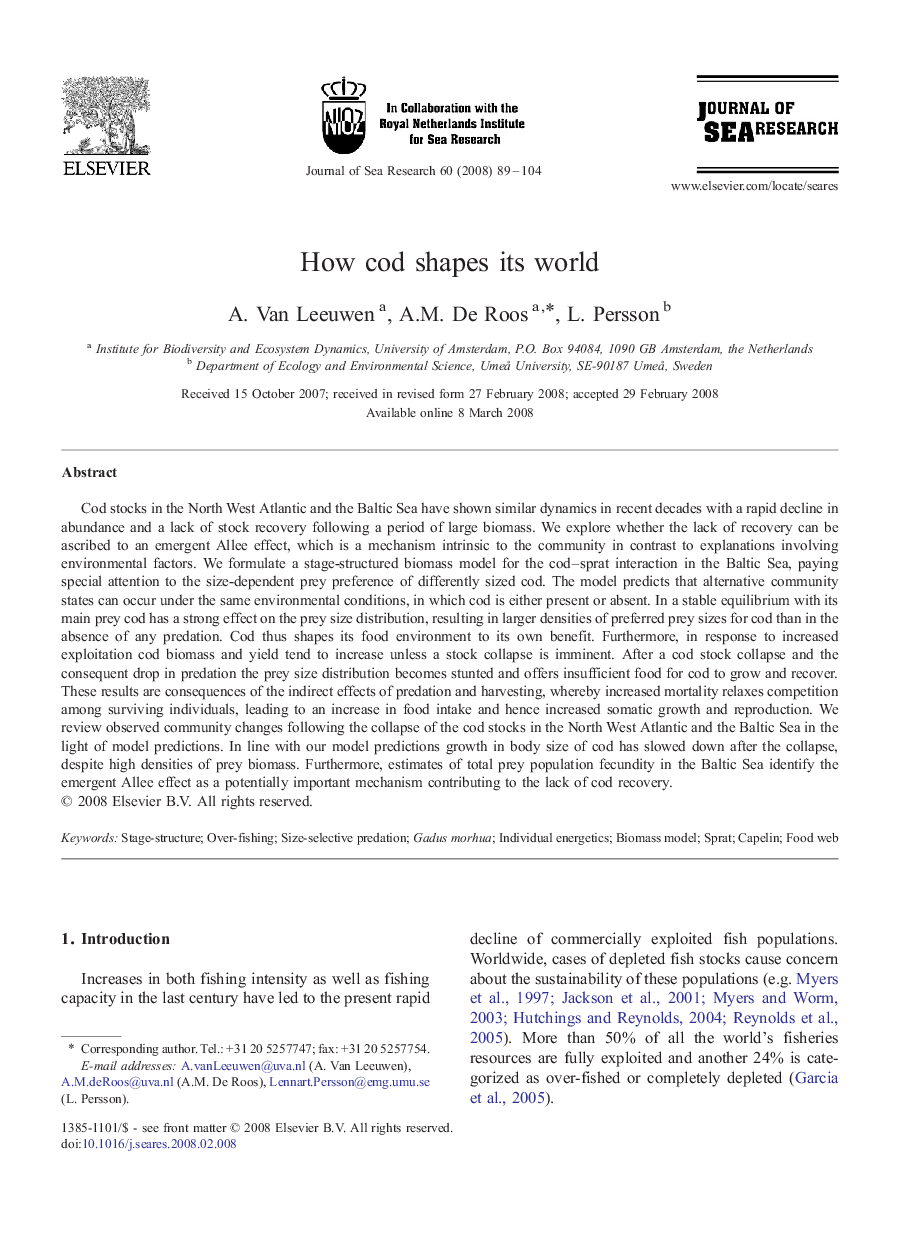| کد مقاله | کد نشریه | سال انتشار | مقاله انگلیسی | نسخه تمام متن |
|---|---|---|---|---|
| 4550342 | 1627512 | 2008 | 16 صفحه PDF | دانلود رایگان |

Cod stocks in the North West Atlantic and the Baltic Sea have shown similar dynamics in recent decades with a rapid decline in abundance and a lack of stock recovery following a period of large biomass. We explore whether the lack of recovery can be ascribed to an emergent Allee effect, which is a mechanism intrinsic to the community in contrast to explanations involving environmental factors. We formulate a stage-structured biomass model for the cod–sprat interaction in the Baltic Sea, paying special attention to the size-dependent prey preference of differently sized cod. The model predicts that alternative community states can occur under the same environmental conditions, in which cod is either present or absent. In a stable equilibrium with its main prey cod has a strong effect on the prey size distribution, resulting in larger densities of preferred prey sizes for cod than in the absence of any predation. Cod thus shapes its food environment to its own benefit. Furthermore, in response to increased exploitation cod biomass and yield tend to increase unless a stock collapse is imminent. After a cod stock collapse and the consequent drop in predation the prey size distribution becomes stunted and offers insufficient food for cod to grow and recover. These results are consequences of the indirect effects of predation and harvesting, whereby increased mortality relaxes competition among surviving individuals, leading to an increase in food intake and hence increased somatic growth and reproduction. We review observed community changes following the collapse of the cod stocks in the North West Atlantic and the Baltic Sea in the light of model predictions. In line with our model predictions growth in body size of cod has slowed down after the collapse, despite high densities of prey biomass. Furthermore, estimates of total prey population fecundity in the Baltic Sea identify the emergent Allee effect as a potentially important mechanism contributing to the lack of cod recovery.
Journal: Journal of Sea Research - Volume 60, Issues 1–2, 2008, Pages 89–104